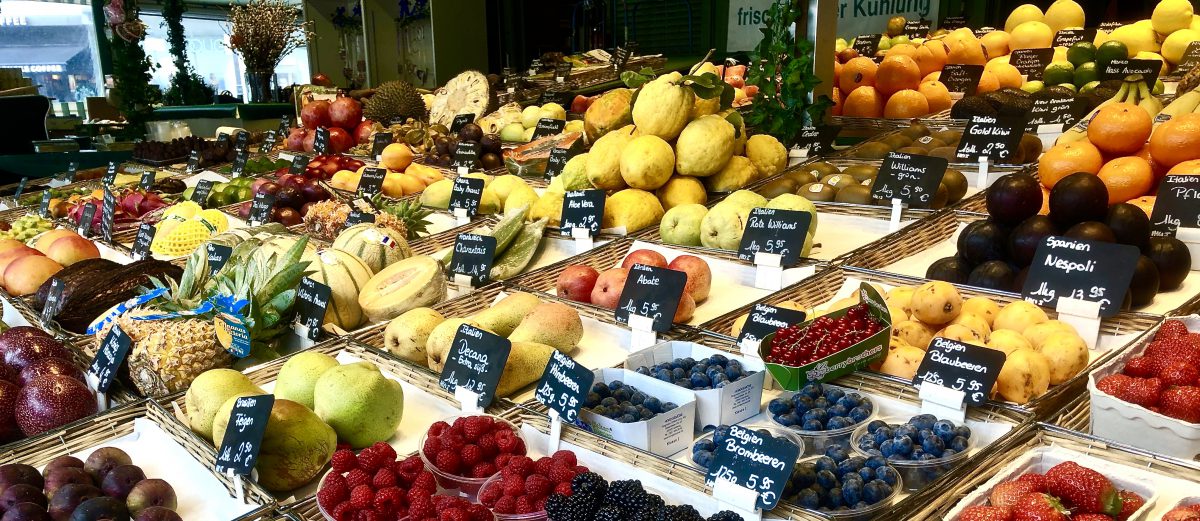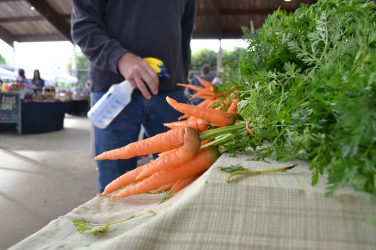Get in. Get out. The four words I utter internally as I enter the automatic doors leading to aisles of boxes and bags. Get in. Get out. I murmur to myself, “Milk and bread, I only need milk and bread.” I return home with plastic bags of sweets and savory treats…oh my! My only excuse for continuing this weekly grocery routine is nothing but personal convenience.
Why It’s Newsworthy: Despite the push for Americans to shop small and support their local businesses, studies confirm the majority of Americans prefer readily available supermarkets because they offer a wide selection of products for budget-friendly prices. In a 2018 survey of more than 3,000 American adults, the National Retail Federation (NFR) found that 89 percent of Americans shop at some form of discount retailers. However, recent USDA and CDC reports reveal an increase in the consumption of organic fruits and vegetables as well as an increase in the accessibility and affordability of fresh produce in our local communities.
Today, discount grocers are making organic products even more accessible and convenient for consumers. The United States Department of Agriculture (USDA) reports that consumer demand for organic goods has grown and continues to show double-digit growth in the United States. As a result, the Organic Trade Association (OTA) also reveals a steady increase in the number of farmers’ markets in the United States from 1,755 in 1994 to 8,144 in 2013. However, despite the growing number of fresh produce markets available to American citizens, 93 percent of organic sales in America still occur in a conventional supermarket setting.
The trend of consumers choosing to shop at discount supermarket chains is still relatively new to Americans. NRF Vice President for Research Development and Industry Analysis, Mark Mathews, explains this development, “Off-price and discount shopping took off during the recession as price-conscious consumers looked to save on everything from brand-name goods to everyday household purchases. Now, eight years into the economic recovery, consumers continue to hunt for deals and discounts.”
However, the growing demand for fresh, organic produce in America is fueling another way to shop for food. Germany is an example of the direction we may head in the future. There, Germans appear to balance both local and commercial market forces.
How do Germans Support Both Local and Commercial Markets?
I ascend the metro steps into the center of Marienplatz. The time is 12:02 in the afternoon. Crowds gather in the square, but I walk straight through the cream-colored arch of Old Town Hall. I turn right toward the cobblestone streets of the Viktualienmarkt when suddenly, my sense of smell takes the lead. The aroma of sweet and vividly red strawberries lingers through the nearly fourteen square mile landmark. The people smile as they stroll through the stalls or mingle as they sit down to enjoy a beer.
Munich locals have a multitude of choices when it comes to purchasing fresh fruits and vegetables for their dinner tables. Because local and commercial markets are available year-round, consumers can support both industries from discount grocery chains to fresh produce markets at the Viktualienmarkt.
The Viktualienmarkt is an immersive experience of Bavarian culture that should not be compared to brick and mortar supermarkets. Leo’s Obst-Stand’l’s at the Viktualienmarkt overflows with fragrant, fresh fruits and vegetables. “You get here in our market, also in winter, all of the products. We work with high quality, not okay [products],” said Lena Maier a thirty-one-year-old employee at Leo’s Obst-Stand’l.
Maier describes how the Obst-Stand’l market’s business model prioritizes customer satisfaction. “Our customers, they can try [products] like berries or grapes or nectarines. They can try [it] and say if it’s good or not,” Maier said.
Understanding the Local Marketplace
Thirty-three-year-old Maria Hottman warmly welcomes and acknowledges all customers with a smile as they peruse her produce stall. She encourages people to understand and learn about the fruits and vegetables they consume. “It would be great if [people] could get a kind of consciousness of where the fruits come from and which season they grow,” Hottman said.
However, it is important to acknowledge the business model behind not only local markets in Munich’s Viktualienmarkt but also the farmers’ markets found in our own communities.
A 2018 report by the Centers for Disease Control (CDC) features Farm to Family, a local program in Vermont whose goal is to increase access to healthy food options for women in the area by making fresh fruits and vegetables more affordable for consumers. They provide Vermont’s WISEWOMAN participants with coupons that allow them to purchase local produce for a discounted rate at more than 55 farmers markets across the state.
Vermont is just one state attempting to bridge the gap between access to healthy food and the ability to afford it. Alabama and Massachusetts are two other states that offer coupons to senior citizens for discounted fruits, vegetables, and herbs at various farmers’ markets throughout their state.
Many people assume that with the title “farmers’ market” comes a high price tag. In fact, the USDA states, “Organic price premiums continue to remain high in many markets as the demand for organic products expands.” Nevertheless, the CDC revealed that initiatives like Vermont’s Farm to Family program allow people to buy fresh, organic produce that they would otherwise not be able to afford at local supermarkets.
Lauren Swenson is a junior majoring in journalism in the Grady College of Journalism and Mass Communication at the University of Georgia.








